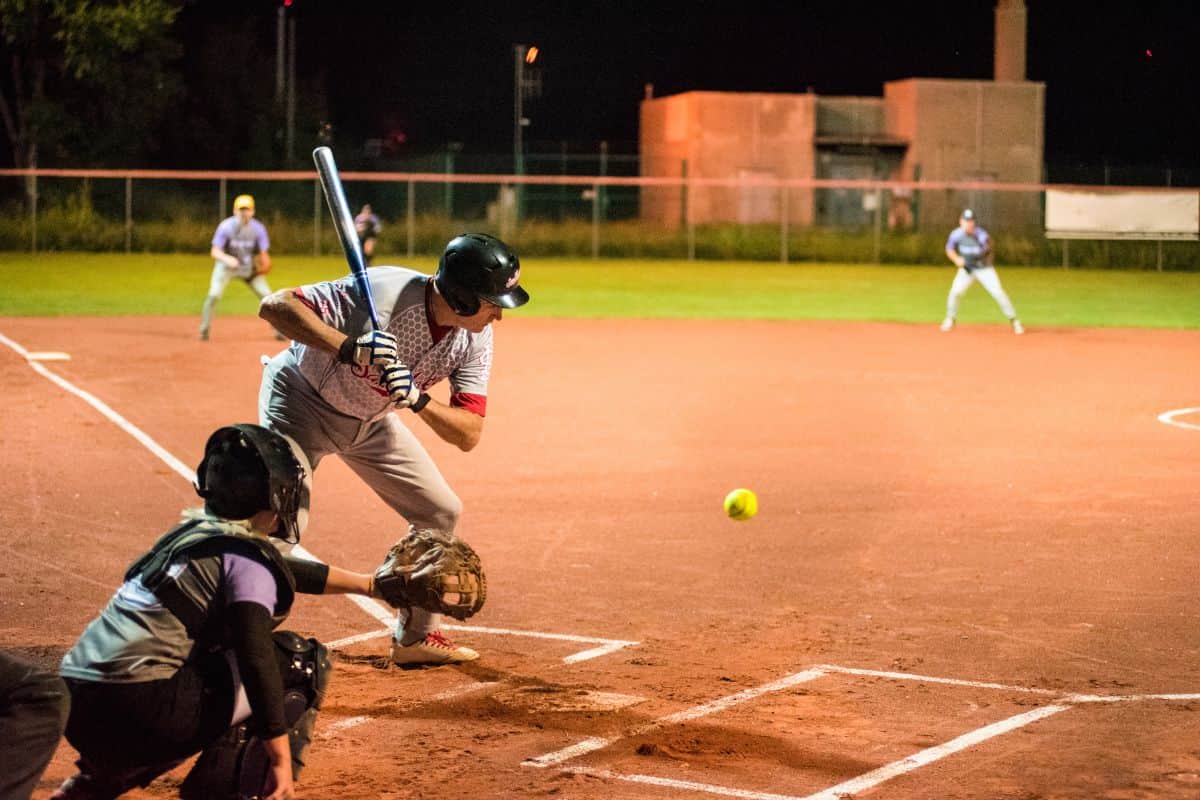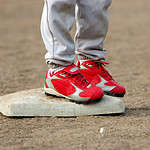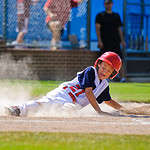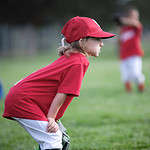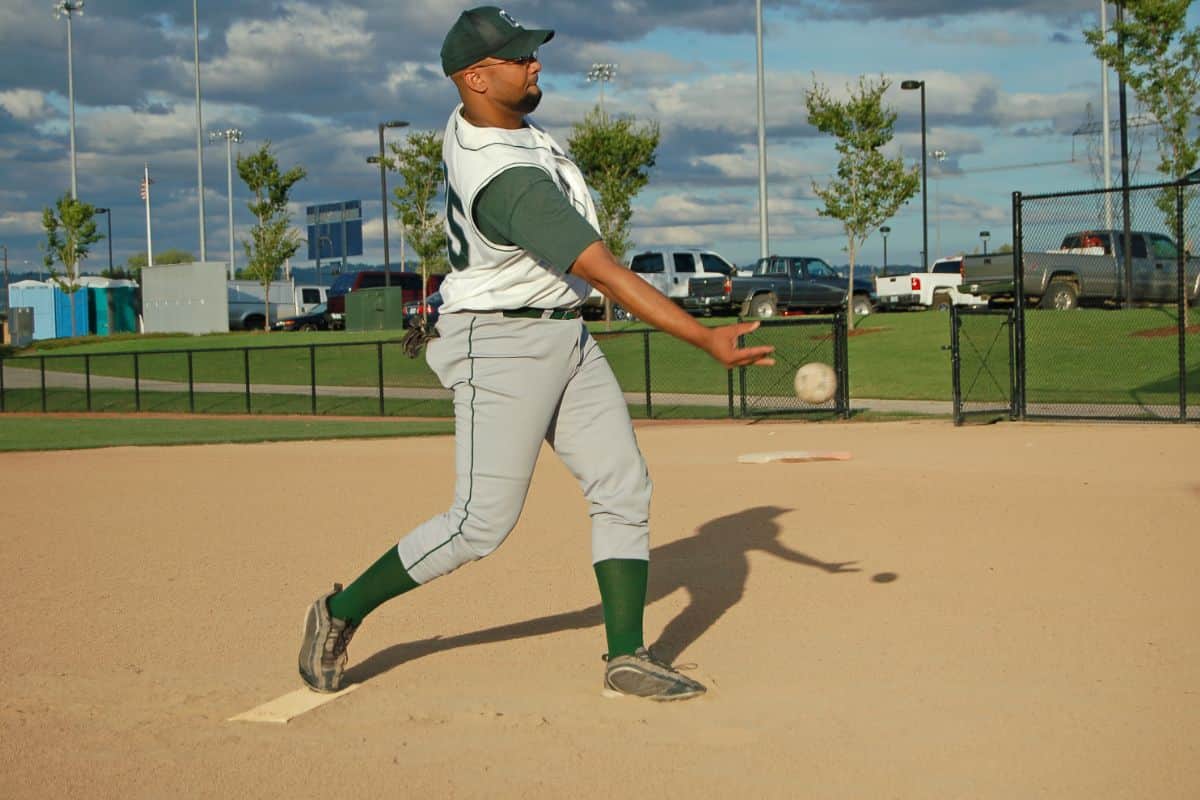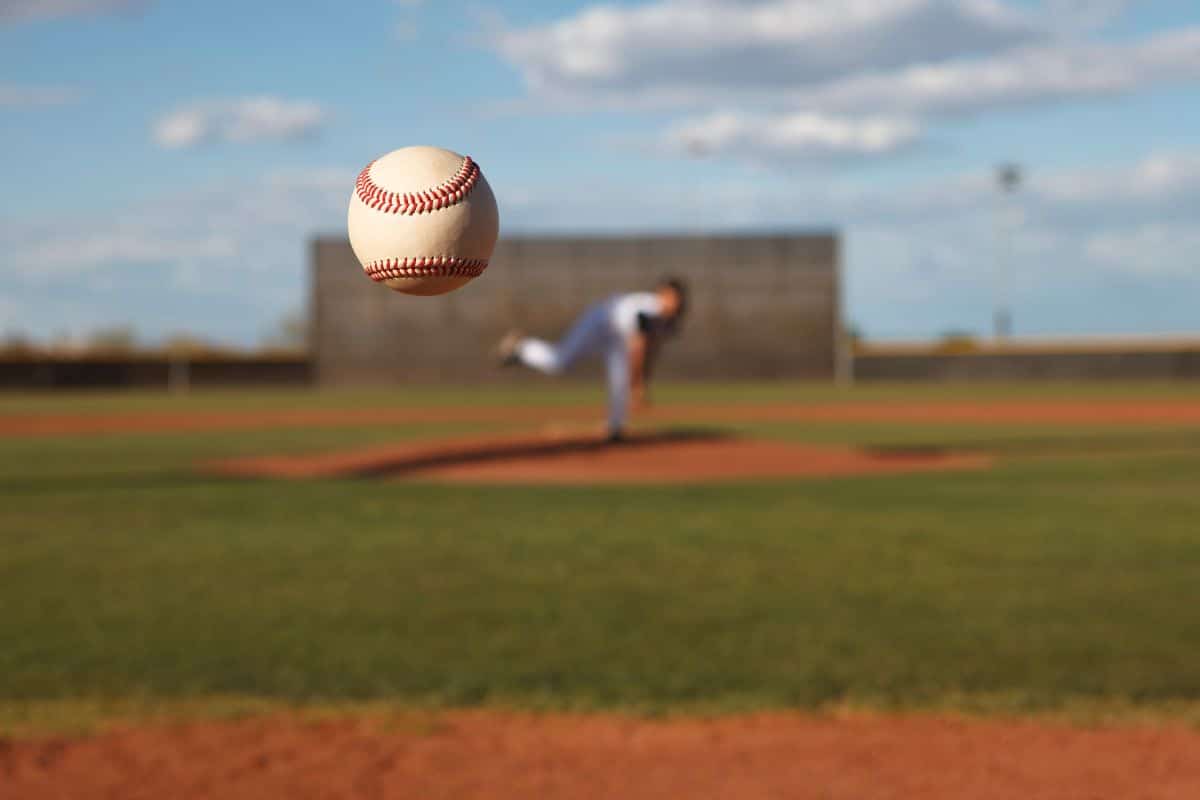We all know how expensive sporting gear can be… especially the footwear, so if you can double up on application, you might be able to save yourself a pretty penny.
One of the most common questions we hear to this effect is whether you can use soccer cleats in baseball.
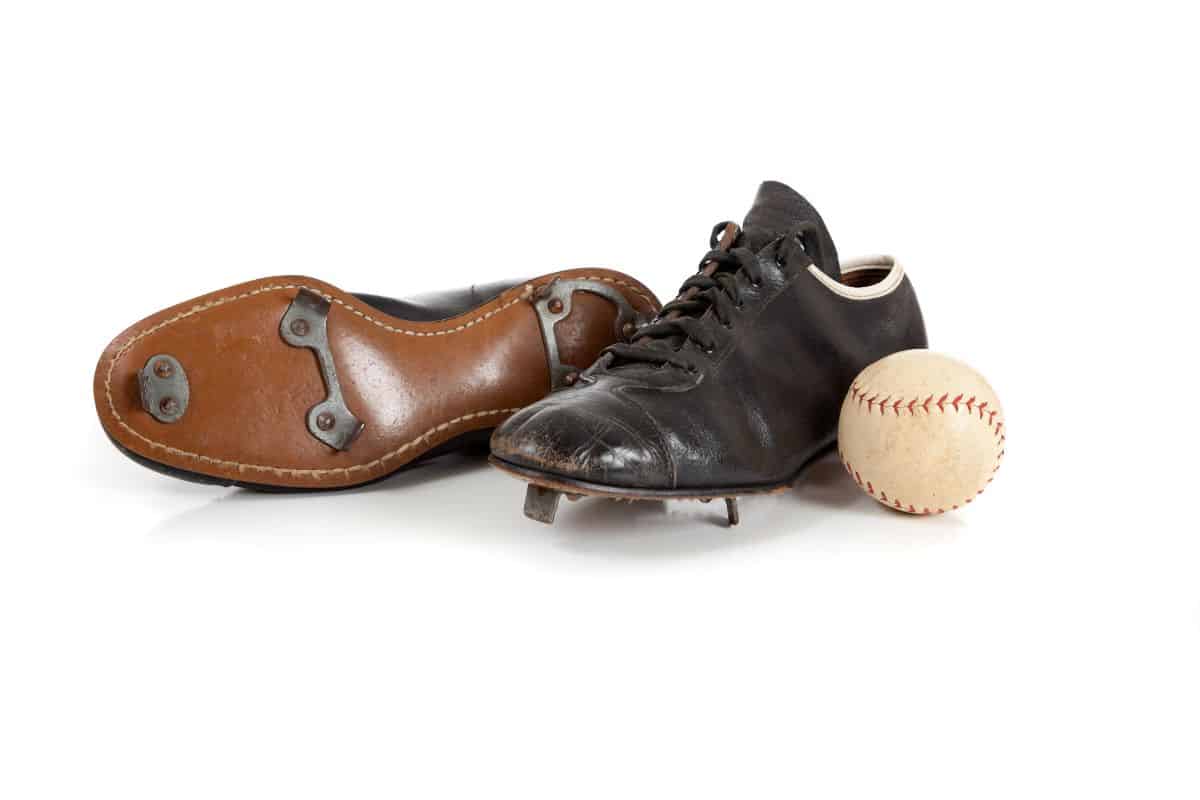
The quick answer is a resounding YES — Hooray! However, like most things in life, it’s a little more complicated than that.
These cleats are NOT the same. Each is tailored specifically to the rigors and terrain of the corresponding sport, and although there is undoubtedly some overlap between the demands of baseball and soccer, they are starkly different games.
So, before you decide to leave those baseball cleats on the shelf and don your trusty old soccer cleats on the diamond, let’s explore how they differ and the impact these disparities can have on performance.
Can Baseball & Soccer Cleats Be Used In Both Baseball & Soccer?
Before we look over the physical differences between these two types of cleats, we should consider some fundamentals.
As mentioned above, you can indeed wear soccer cleats to play baseball — The umpire won’t give a hoot! However, the referee of a soccer game won’t be so blasé.
If you take to the soccer pitch in your baseball cleats, the ref will call you up on it and exclude you from play.
In fact, any soccer coach worth their salt wouldn’t even let you attend a practice in baseball cleats, unless, perhaps, you were doing drills independently. But why is this the case?
Well, one of the key differences between these shoes is the width and point of the cleats themselves.
There are some variations in soccer cleats (blades vs. studs), but generally speaking, they’re quite wide and always blunt.
Baseball cleats, by contrast, are commonly thin and sharp, making them a major hazard in a contact-heavy sport such as soccer.
Soccer Cleats Vs. Baseball Cleats: What Are The Main Differences?
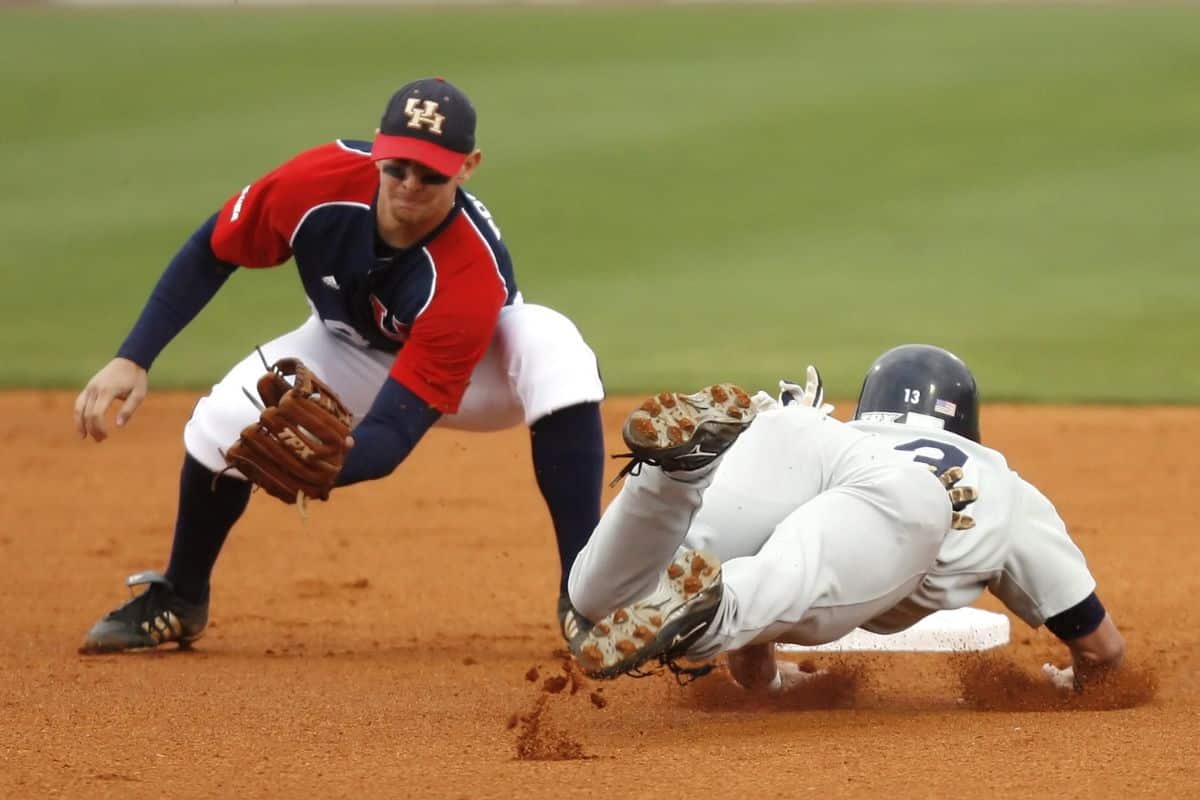
Okay, so we’ve discussed the issue of sharpness, but this is just the tip of the iceberg. Detailed below are all the other key differences between these cleats.
Cleat Pattern
Sticking to the appropriate sporting shoe isn’t just the best move for in-game safety, but for quality play as well.
Although you’re allowed to don soccer cleats on the diamond, the cleat pattern won’t be optimized to help you tap into your true potential as a player.
The exact layout of soccer cleats will differ from shoe to shoe, but one thing we can say for sure is that they will NOT have one situated directly beneath the toes, but every pair of baseball cleats will.
This extremity cleat is essential for maintaining traction when runners advance on base, but on the soccer pitch, it would just inhibit kicking style and tear up the turf.
Being that most of the action in baseball occurs on clay rather than grass, there’s no chance of this additional cleat causing any damage.
On soccer cleats, the toe cleat is shifted backwards to the ball of the foot, giving them lots of centralized traction for lightning-fast maneuvers during which the player’s center of gravity changes suddenly.
Soccer cleats are also likely to have a four-cleat grid at the heel for extra grip and facilitate slightly faster acceleration on slippery and soft terrain, but baseball cleats typically use a three-cleat triangular heel pattern.
As you don’t need quite as much traction to gain momentum quickly on clay, this fourth cleat would be redundant on the diamond and may actually make you a little unsure on your feet.
Cleat Tips
Mostly due to the ferocity of slide tackles, soccer cleats must be tipped with rubber or plastic.
They still hurt like the Dickens when someone comes at you cleats up, but the tips do prevent the cleats from penetrating shin guards and doing extreme damage.
Youth baseball cleats follow very much the same principles on this front, but when you get into adult sizes, full metal cleats are the only way to go, as they provide the most support and traction on clay.
The soft tips of soccer cleats, combined with their comparative bluntness, mean they’re not great for explosive action on the diamond, as they don’t dig deep enough into the clay to give you the grip you need to perform at the zenith of your ability.
Upper Materials
One of the most remarkable things about soccer cleats is their incredibly thin and flexible upper. Players need to be able to really feel the ball through the material to engage in articulate play.
The twinkle toes footwork of Cristiano Ronaldo and the swerving free kicks of Gareth Bale simply wouldn’t be possible with thick, solid materials.
In America’s pastime, things are done a little differently.
All your feet have to do in baseball is run like hell (and perhaps take the odd impact from time to time), meaning a thicker, more robust upper material is used to prioritize stability and safety.
This somewhat rigid shell supports explosive, direct movement.
Wearing soccer cleats on the diamond will leave you a little thin on your feet in the support department… literally.
At best, you’re going to be sluggish off the mark, and at worst, you could sprain an ankle or take a cleat in the foot.
Midsoles
The midsole is a fundamental component of a baseball cleat. It makes for a heavier, yet supportive shoe, creating an anchoring effect when fielders throw long from deep out-field, when we throw those asteroid-fast pitches, and of course, when we’re swinging for a big hit.
Now, one of the primary goals of soccer cleat design is to get the players as close to the ground as possible, which means, midsole… you’re outta hereeee! It’s all about creating a low gravity and a lighter, more nimble shoe.
This is essential for maintaining player agility and speed throughout the entire 90+ minutes of the beautiful game. Heavier cleats with midsoles would simply be too cumbersome.
Ankle Support
Both cleats have some form of ankle support to prevent injury, but baseball cleats offer much more stability in this area.
The robust upper we discussed earlier helps to create a sturdy heel structure that leaves you feeling more grounded.
In baseball, a supportive heel is absolutely spinal to power hitters, pitchers, and far-flung fielders. Much like the midsole, it helps to anchor the player, giving them a stable foundation to operate from.
The heels of soccer cleats are much more rigid than the rest of the shoe, but they’re nothing when compared to those of soccer cleats.
They strike a balance between support and agility, a sustained tension that enables soccer players to move so freely without injuring themselves.
Final Thoughts
As you now know, you can indeed wear soccer cleats when playing baseball; however, just because you can do something, doesn’t necessarily mean that you should do something.
Baseball cleats are finely tuned to the game, and wearing anything else will only detract from your performance. Sure, you can use soccer cleats in a pinch, but we can’t recommend sticking with them.
Our advice is to save up and get yourself a fine pair of baseball cleats as well, as limitations on the diamond could have dire consequences.
You might contribute disproportionately to losses, you could injure yourself, or you might not even make the cut in the first place!
Do yourself a favor, purchase some baseball cleats, and unlock your true potential!
- Fenway Park Seating Chart: Best Seats To See the Red Sox - July 17, 2023
- What is RBI in Baseball: A Simple Explanation of The “Ribby” - July 3, 2023
- What is DFA in Baseball? A Term No Player Wants to Hear - July 3, 2023

